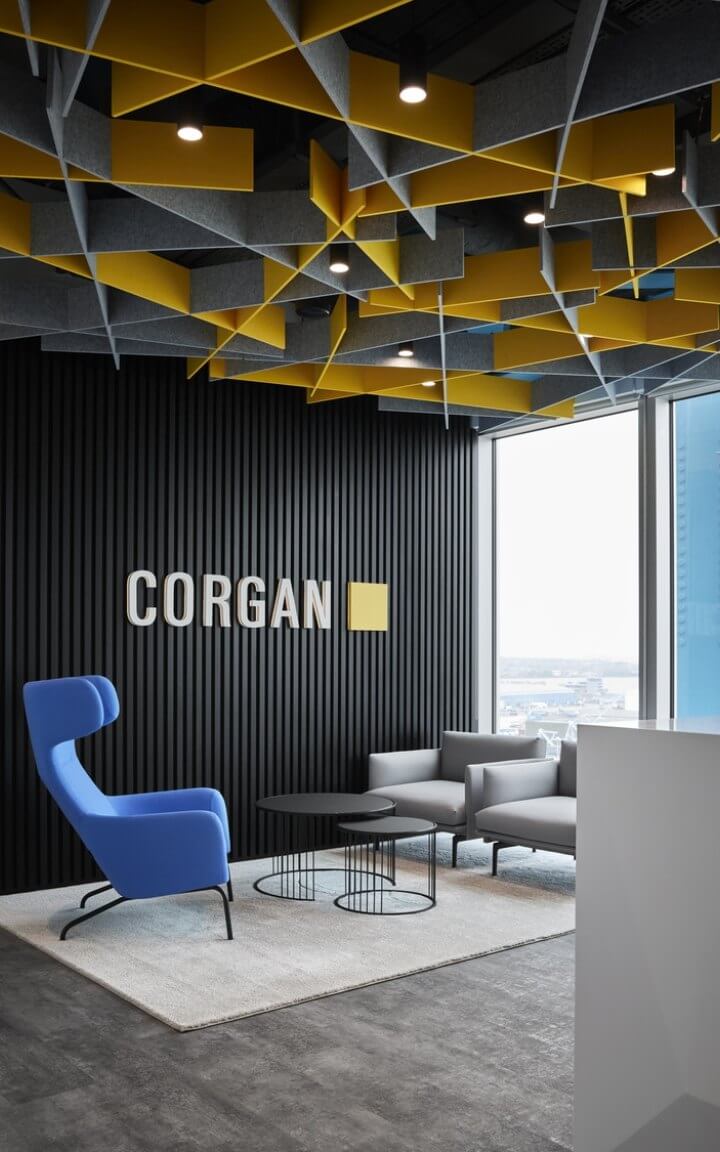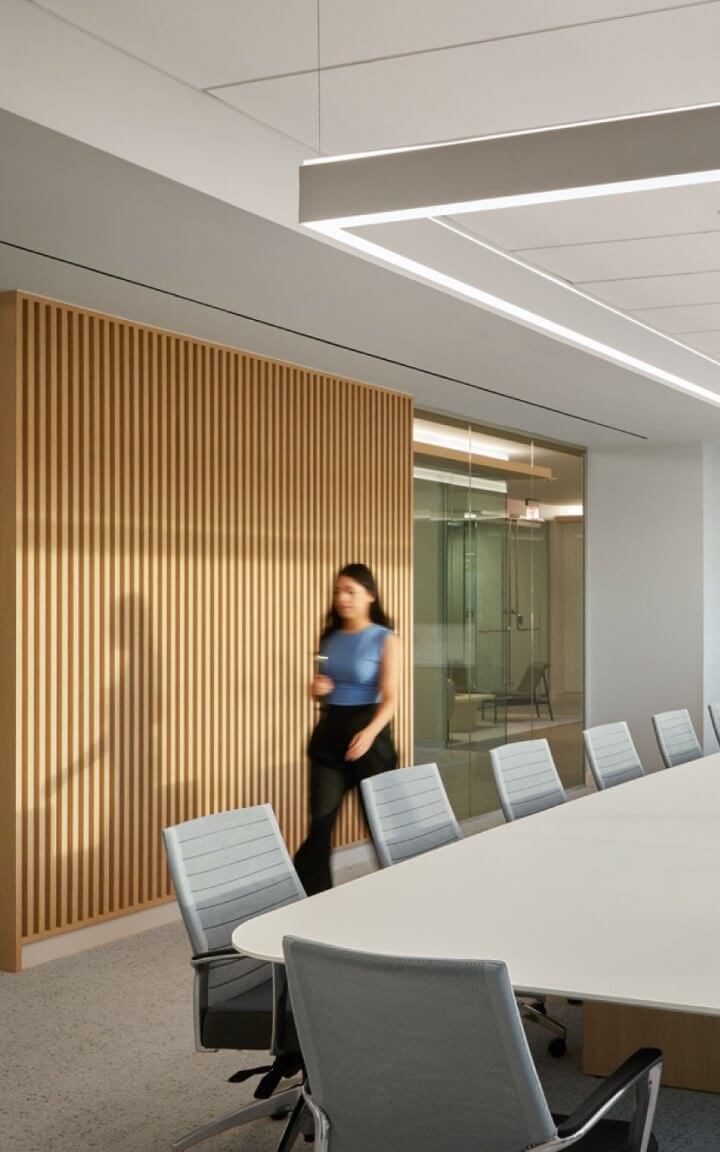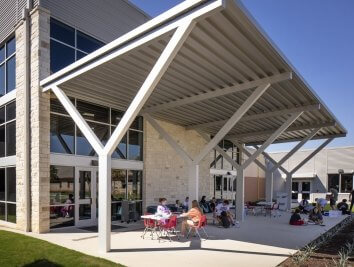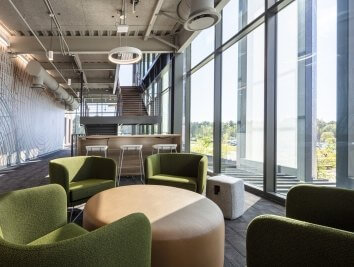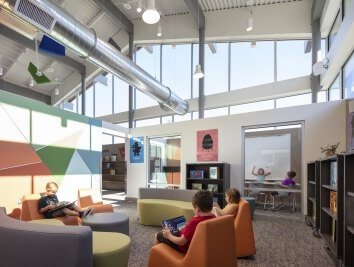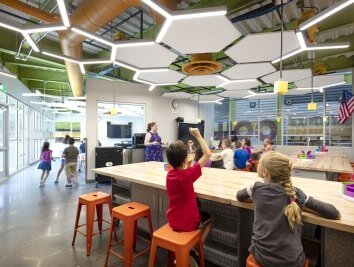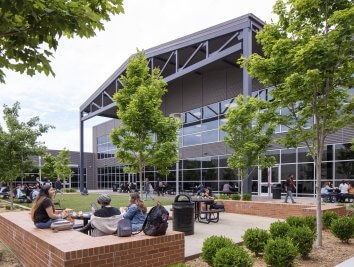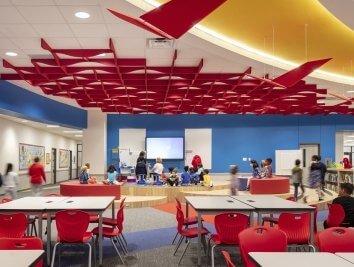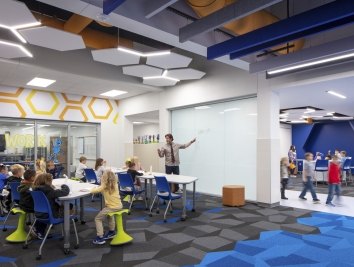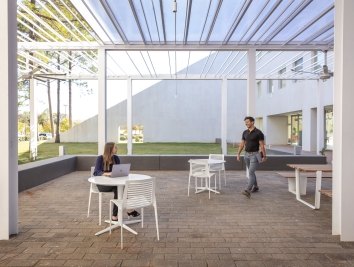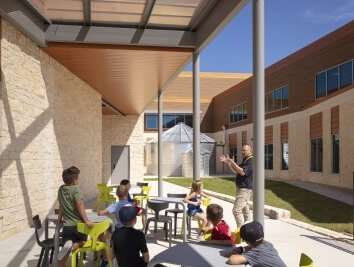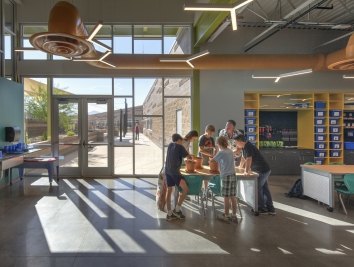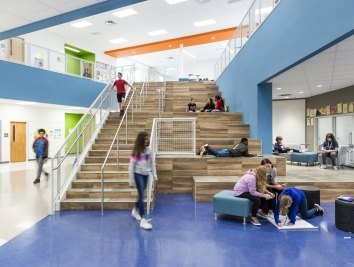Lessons from Teachers: How School Design Can Attract and Keep Teachers

Most of us probably had a favorite teacher growing up. A teacher that actually made coming to school fun. A teacher that taught their subject so well, you can still remember their words of wisdom today. These teachers left an imprint on our childhood.
But many teachers then and still today serve this honorable profession despite not having the adequate support necessary to be fully effective in the classroom. In fact, according to a 2019 study by the Economic Policy Institute (EPI), more than half of teachers do not feel supported in their jobs, and 25 percent consider leaving the profession as a result. A recent study conducted by Corgan found that a school’s design can play a big role in why teachers feel unsupported.
Corgan conducted an online survey of 1,000 K-12 teachers across the United States and found that 68 percent of teachers stated that if they were to look for a job at another school, the design of the school and classroom would be a factor in their decision. And nearly all teachers (98 percent) said that having a well-designed classroom makes teaching more enjoyable.
In today’s education landscape of teacher shortages and high burnout, the competition for talent and students is fierce among school districts, and the types of learning environments they offer teachers is becoming a key differentiator.
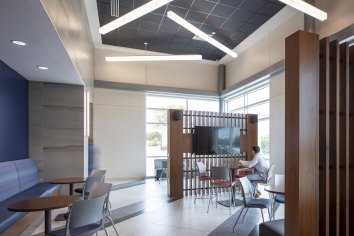
The Corgan education studio creates professional spaces for teachers to combat stress and make teaching more enjoyable through the use of professional upholstery and design elements leveraged from corporate environments.
The impact of design on the teaching profession is felt most in the space where teachers spend the majority of their day—the classroom. Yet, these spaces do not always put teachers first, as evidenced by survey results finding that 25 percent of teachers stated having classroom or learning environments that are limiting is a main source of stress for them – on par with pressure from administration and lack of support from school leadership.
Many corporate and healthcare work environments are evolving to a more human-centric design with employee well-being at the core. Competitive school districts are adapting some of these trends to meet the unique work environment needs of teachers. Due to hyper-structured schedules, minimal privacy, and demanding “always-on” mentality, teachers require more seamless integrations of certain spatial, technology, and wellness design elements. This all has to be achieved with an eye toward ever-tightening budgets.
Unlike a typical office job, teachers spend most of their time on their feet interacting with students and often don’t have time for some of the most basic of functions like eating, refilling water, making personal calls or even using the facilities. The classroom experience for teachers also can isolate them from their peers throughout the day with little time – or space – to collaborate with others. Combine these things with limited personalization or power of choice for teachers in learning environments, and they often can be left feeling unsupported.
While there are differences in the general environment and work setting between teachers and professionals in other fields, there are also a number of similarities. All professionals need spaces carved out for personal time and even basic amenities such as natural light or professional and flexible furniture. From benching workstations that can help create an open floor plan and maximize square footage, to providing teachers with sit-to-stand desk options and furnishing the room with professional upholstery, many of the design tactics that we see leveraged by professionals in other fields can also have a positive impact when designing a school or classroom.
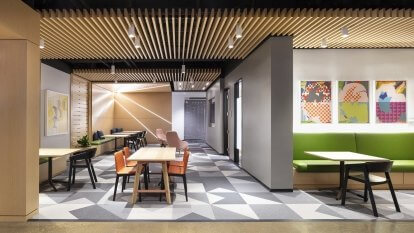
Teacher-dedicated spaces provide areas for collaboration among peers and increase opportunities to enhance well-being, effectiveness, and satisfaction through the seamless integration of amenities.
Simply look at recent design evolutions in the healthcare industry. They faced similar challenges to address unique workplace requirements such as rigid work schedules, contamination restrictions, and high-stress environments where they’re also “always on” with little downtime. Healthcare facilities by nature require patient-centric spaces which historically has resulted in limited footprints for staff. However, healthcare design continues to evolve as evidenced by today’s newer nurse stations. What once were large central nurse stations are now becoming smaller, decentralized stations that provide more convenient and efficient spaces for a variety of nursing tasks throughout the day.
Drawing inspiration from these latest healthcare trends, schools are now creating new multi-functional “teacher unions” and soon may offer “satellite pod” spaces that serve as an anchoring place for different types of work and professional collaboration.
Imagine how these “satellite pods” can be shared by a small group of classrooms, making them more accessible than traditional breakrooms or even the latest “teacher unions” spaces. Each pod would be centrally located and surrounded by a number of classrooms. The teachers easily can transition from their respective classrooms to the pod for specific needs throughout the day. These pods, similar to the design used in hospitals, would include workstations, restrooms, refreshment stations, and private spaces for phone calls, nursing mothers or other “me moments.”

Conceptual design: Anchoring a small cluster of classrooms, the teacher's pod punctuates the campus with professional settings and convenient, positive, and functional spaces to support teachers throughout their workday.
Applying insights and leveraging design trends from other industries can help us create highly effective learning spaces that truly support our teachers. These latest corporate design movements recognize that staff perform better, are more engaged, and are more likely to choose a work environment that is attractive, supports their well being, and is intelligently and thoughtfully deigned for their workflow. Removing obstacles, creating a variety of places for work, personalization, collaboration opportunities, wellness, etc., will lead to more efficient and convenient communication across colleagues.
The idea of a centralized hub was inspired by this survey, and several existing schools already have included elements of these ideas, which focus on integrating amenities into a teacher’s day and providing teachers with the same professional elements that modern corporate environments provide.
Teachers give us so much, and the great thing about designing schools is the opportunity we have to make their job more enjoyable by making their workspaces more accommodating to their specific needs. It’s time we give back through more supportive, human-centric design to those who helped shape some of our fondest educational memories.
